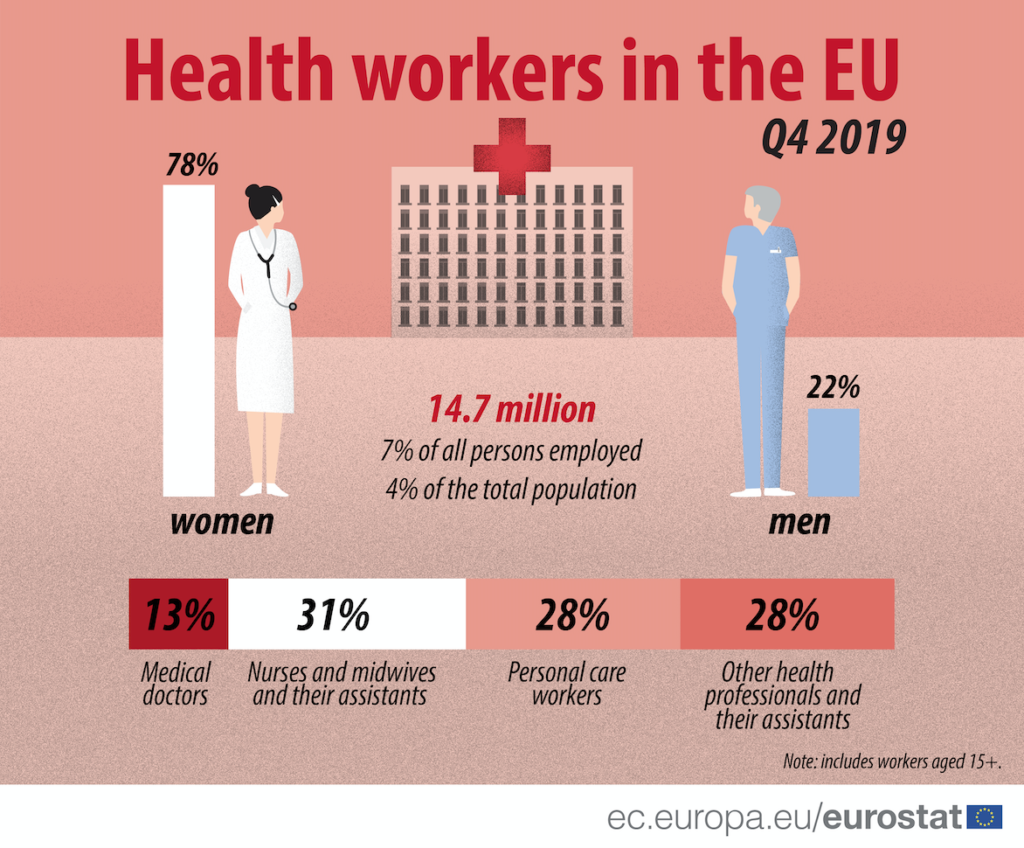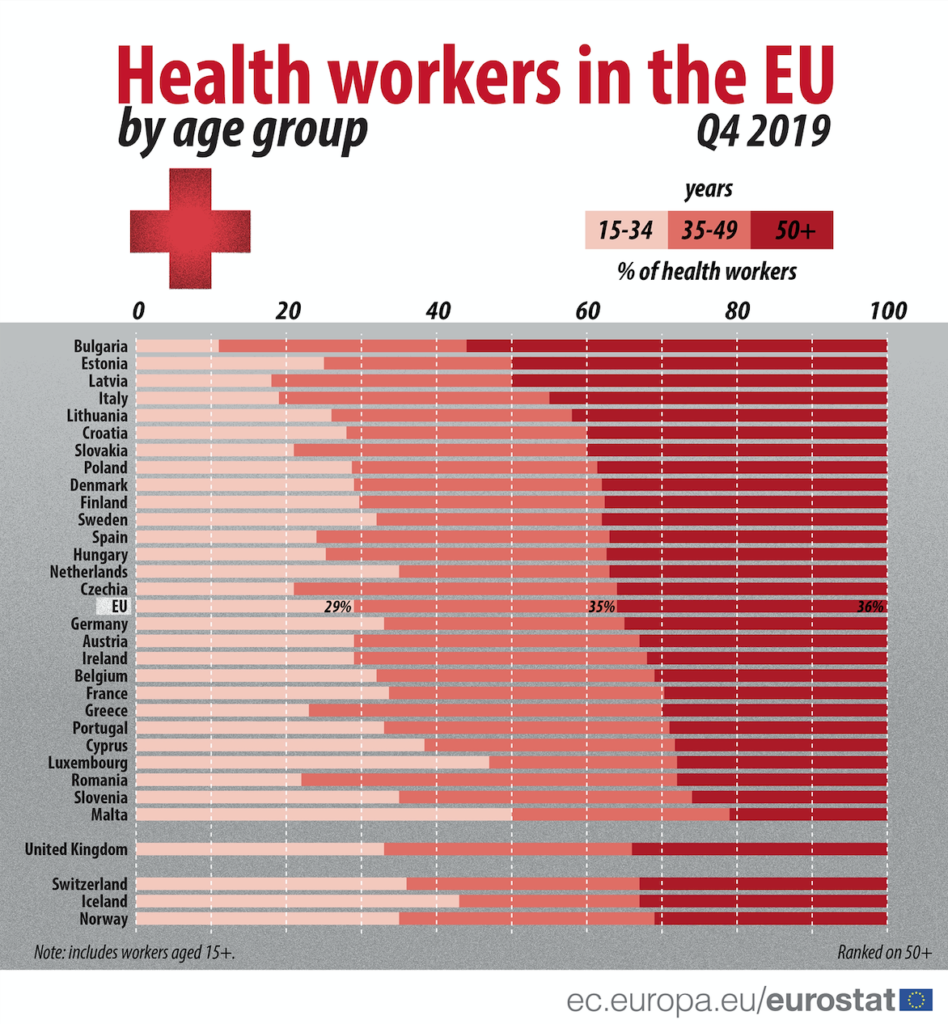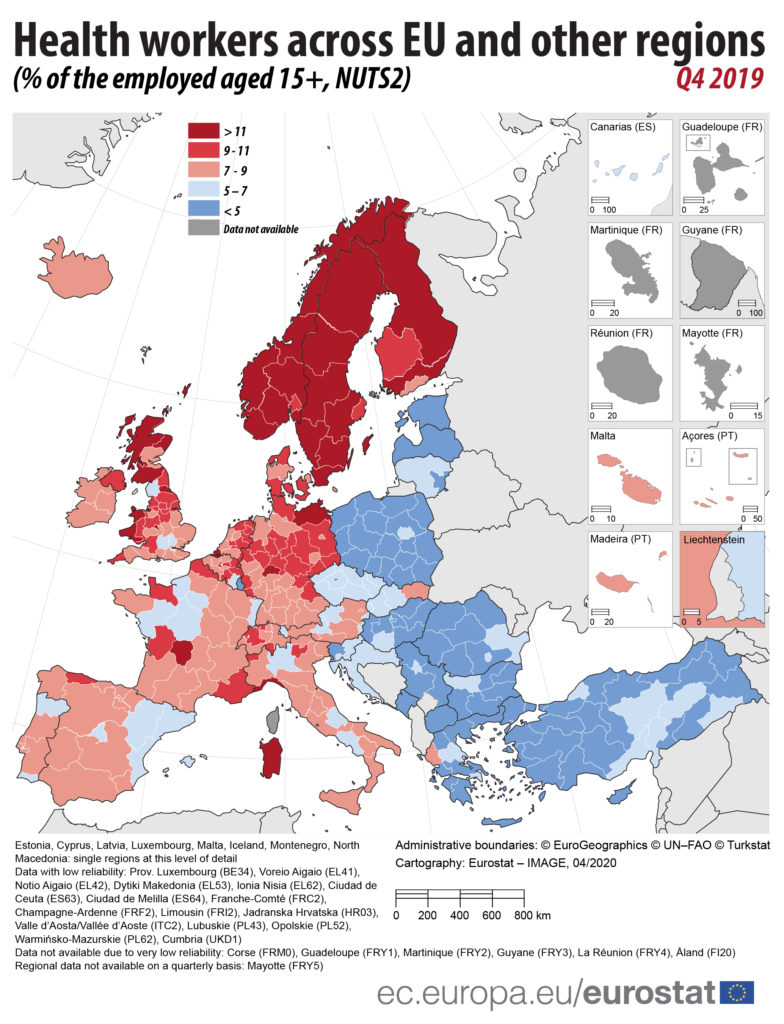
Approximately 78% of health workers across the European Union are women out of a workforce of 14.7 million people employed in health occupations, according to the latest figures from Eurostat.
This represents 7% of all persons employed and almost 4% of the total population of the EU with Greece and Cyprus holding a smaller per capita share.
In half (13 of 27) of the EU Member States, the largest share of health workers were aged over 50, with the highest share reported in Bulgaria (56%), followed by Estonia and Latvia (both 50%), Italy (45%) and Lithuania (42%).

In 11 EU Member States, people aged 35 – 49 accounted for the largest share of health workers, whilst in only three EU Member States health workers aged 15-34 represented the largest share: Malta (50%), Luxembourg (47%) and Cyprus (38%).
Among the EU Member States, Sweden recorded the highest share of health workers (12% of the employed), followed by Finland and Denmark (both 10%). In contrast, the lowest shares were recorded in eight EU Member States: Cyprus, Poland, Latvia, Romania, Luxembourg, Bulgaria, Hungary and Slovenia, where health workers represented around 4% of the employed.
Relative to population size, Sweden also recorded the highest share (7% of the total population), similarly followed by Finland, Denmark as well as the Netherlands (all 6%). At the other end of the scale, the lowest shares were recorded similarly in Poland, Romania, Cyprus, Bulgaria, Latvia, Luxembourg, Hungary and Slovenia but also in Greece. In these nine EU Member States health workers represented only around 2% of the total population.

With the exception of Sardegna (14% of the employed) and Liguria (13%) in Italy, the highest shares of health workers were generally recorded in northern regions of the EU, namely in:
- Seven Swedish regions: Övre Norrland and Mellersta Norrland (both 16%), Norra Mellansverige and Östra Mellansverige (both 14%), Småland med öarna (13%), Sydsverige and Västsverige (both 12%),
- Pohjois- ja Itä-Suomi (13%) in Finland as well as
- Zeeland (12%) in the Netherlands.
*Source: Eurostat


